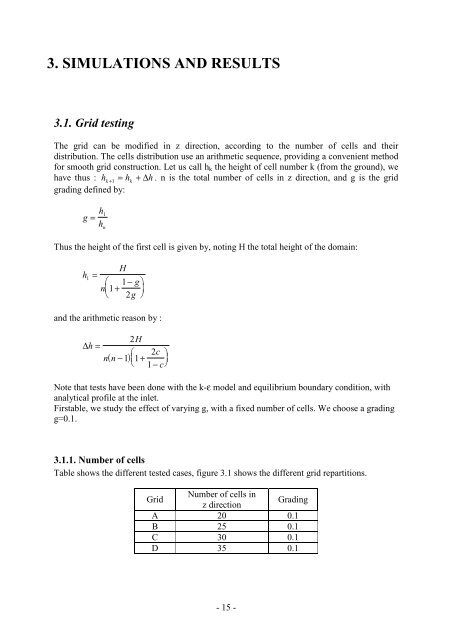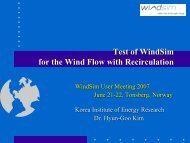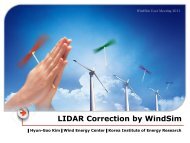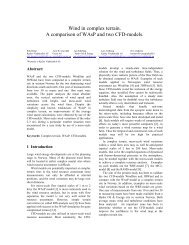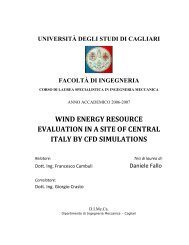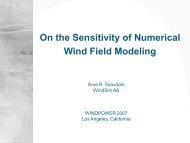Wind field simulations at Askervein hill - WindSim
Wind field simulations at Askervein hill - WindSim
Wind field simulations at Askervein hill - WindSim
Create successful ePaper yourself
Turn your PDF publications into a flip-book with our unique Google optimized e-Paper software.
3. SIMULATIONS AND RESULTS<br />
3.1. Grid testing<br />
The grid can be modified in z direction, according to the number of cells and their<br />
distribution. The cells distribution use an arithmetic sequence, providing a convenient method<br />
for smooth grid construction. Let us call h k the height of cell number k (from the ground), we<br />
have thus : hk<br />
+ 1<br />
= hk<br />
+ ∆ h . n is the total number of cells in z direction, and g is the grid<br />
grading defined by:<br />
g<br />
h<br />
= 1<br />
h n<br />
Thus the height of the first cell is given by, noting H the total height of the domain:<br />
h<br />
1<br />
=<br />
H<br />
g<br />
n<br />
⎛ 1+ 1−<br />
⎞<br />
⎜ ⎟<br />
⎝ 2g<br />
⎠<br />
and the arithmetic reason by :<br />
∆h =<br />
2H<br />
⎛ 2c<br />
⎞<br />
n( n − 1)<br />
⎜1+ ⎟<br />
⎝ 1 − c⎠<br />
Note th<strong>at</strong> tests have been done with the k-ε model and equilibrium boundary condition, with<br />
analytical profile <strong>at</strong> the inlet.<br />
Firstable, we study the effect of varying g, with a fixed number of cells. We choose a grading<br />
g=0.1.<br />
3.1.1. Number of cells<br />
Table shows the different tested cases, figure 3.1 shows the different grid repartitions.<br />
Grid<br />
Number of cells in<br />
z direction<br />
Grading<br />
A 20 0.1<br />
B 25 0.1<br />
C 30 0.1<br />
D 35 0.1<br />
- 15 -


